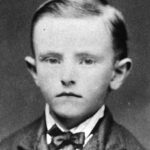John Wesley, born on June 17, 1703, in Epworth, Lincolnshire, England, and passing away on March 2, 1791, in London, was a pivotal figure in religious history. As an Anglican clergyman and a powerful evangelist, he co-founded the Methodist movement within the Church of England alongside his brother, Charles Wesley. His life and work profoundly impacted not only the religious landscape of England but also spread globally, leaving an indelible mark on Christianity.
Early Life and Education of John Wesley
Born into a clergyman’s family, John Wesley was the son of Samuel Wesley, a rector in Epworth, and Susanna Wesley. His upbringing was steeped in religious and intellectual discipline. He received his early education at the Charterhouse School in London, before attending Christ Church, Oxford University in 1720. Wesley graduated from Oxford in 1724, after which he committed himself to priesthood. He was ordained as a deacon in 1725 by the Bishop of Oxford and became a fellow of Lincoln College the following year. Following a period assisting his father in the parishes of Epworth and Wroot, Wesley was ordained as a priest in 1728, solidifying his path within the Anglican Church.
The Holy Club and Methodical Beginnings
Returning to Oxford in 1729, John Wesley joined a religious group initiated by his brother Charles. This group, which included Robert Kirkham and William Morgan, was dedicated to methodical study and devout religious practice. They weremockingly labeled “Methodists” due to their systematic approach to faith and life. John Wesley soon took over the leadership of this group, expanding its membership and influence. The “Methodists”, also known as the Holy Club, were distinguished by their commitment to frequent communion, rigorous fasting twice a week, and structured spiritual discipline.
Beyond personal piety, the Holy Club engaged in social outreach. From 1730, they extended their activities to Oxford’s marginalized populations, visiting prisoners, providing literacy education, settling debts, and seeking employment for them. Their compassionate work extended to workhouses and the impoverished, distributing essential resources like food, clothing, medicine, and books, and even establishing a school. Although the Holy Club dissolved after the Wesley brothers departed in 1735, its emphasis on methodical spirituality and social action laid the groundwork for the future Methodist movement.
Mission to Georgia: A Test of Faith
Following his father’s death in 1735, John Wesley embarked on a mission to the colony of Georgia in North America. Persuaded by John Burton, an Oxford friend, and James Oglethorpe, the Governor of Georgia, Wesley aimed to minister to the colonists and evangelize Native American populations. Accompanied by Charles, also ordained for this mission, John encountered Moravian emigrants whose evident spiritual peace deeply impressed him, contrasting with his own spiritual searching.
 John Wesley preaching, alt text: John Wesley delivering a sermon outdoors to a large gathering of people, reflecting his evangelistic ministry.
John Wesley preaching, alt text: John Wesley delivering a sermon outdoors to a large gathering of people, reflecting his evangelistic ministry.
However, the mission itself proved largely unsuccessful. Wesley’s efforts to convert indigenous peoples were abortive, and he faced resistance and criticism from the colonists. His strict adherence to high churchmanship and an unfortunate romantic entanglement with Sophia Hopkey, which led to a public and controversial rejection of her from Holy Communion, further alienated him. Facing mounting difficulties and personal turmoil, Wesley fled Georgia in December 1737, returning to England disillusioned but unknowingly on the cusp of a profound spiritual transformation.
The Aldersgate Experience: A Heart Strangely Warmed
Back in London, John Wesley encountered Peter Böhler, a Moravian who profoundly influenced his spiritual journey. Böhler emphasized the necessity of simple faith for salvation. During this period, Wesley also studied Martin Luther’s commentary on the Letter to the Galatians, which illuminated the doctrine of justification by grace through faith. The pivotal moment arrived on May 24, 1738, in Aldersgate Street, London. At a Moravian meeting within the Church of England’s auspices, as Luther’s preface to the Letter to the Romans was being read, Wesley experienced a profound personal conversion. He famously described his heart as being “strangely warmed,” marking a shift from intellectual assent to a deeply felt, personal faith.
Itinerant Preaching and the Rise of Methodist Societies
Following the Aldersgate experience at the age of 35, John Wesley dedicated his life to proclaiming the message of salvation through faith. Initially, he preached in Church of England pulpits whenever invited. However, his passionate and enthusiastic style soon led to doors closing to him. Undeterred, Wesley turned to religious societies, seeking to revitalize them with spiritual fervor. He introduced “bands,” small, intimate groups for spiritual sharing and mutual accountability, modeled after Moravian practices.
In 1739, urged by George Whitefield, another influential preacher of the Great Awakening, Wesley ventured into open-air preaching to reach the unchurched masses. This marked a turning point. Wesley gathered converts into societies for continued spiritual growth and fellowship. Asked to lead a London group, he soon found similar societies forming in Bristol, and across England. To maintain order and spiritual integrity within these burgeoning groups, Wesley published “Rules” for the Methodist societies in 1743. To expand the movement, he became an itinerant preacher, traveling extensively and establishing new societies. Facing resistance from established clergy, Wesley was compelled to enlist lay preachers to assist in leading and administering the growing Methodist societies.
Legacy and Lasting Influence
Many of Wesley’s preachers extended their work to the American colonies. Following the American Revolution, when most preachers returned to England and the Bishop of London refused to ordain ministers for the United States, Wesley made a controversial decision in 1784 to ordain preachers himself. In the same year, he formally recognized the independence of Methodist societies from the direct control of the Church of England, solidifying Methodism as a distinct movement.
Towards the end of his life, John Wesley became a respected and honored figure throughout the British Isles. His tireless preaching, organizational skills, and profound theological insights shaped Methodism into a powerful and enduring force within Christianity. His emphasis on personal piety, social action, and accessible theology continues to inspire millions worldwide, affirming his lasting legacy as a transformative religious leader.

